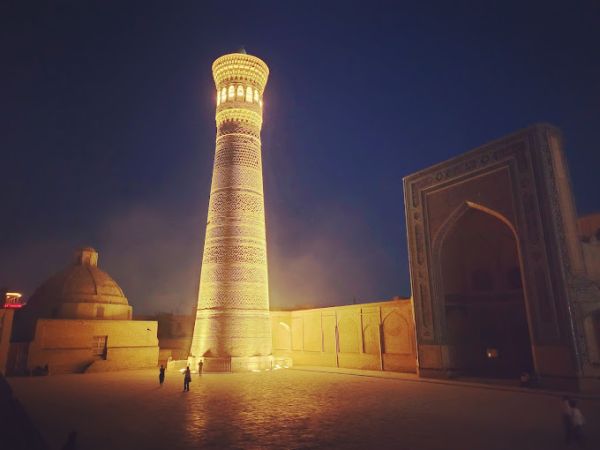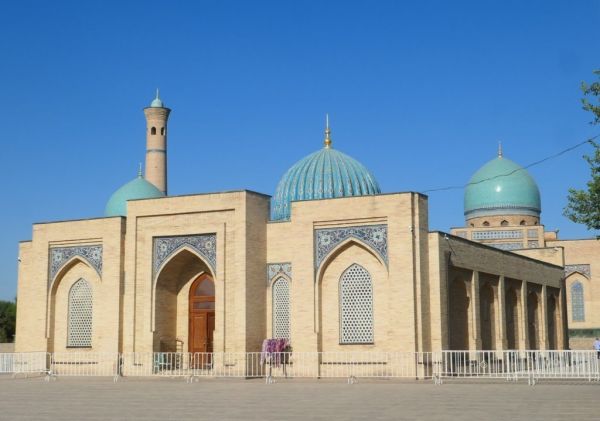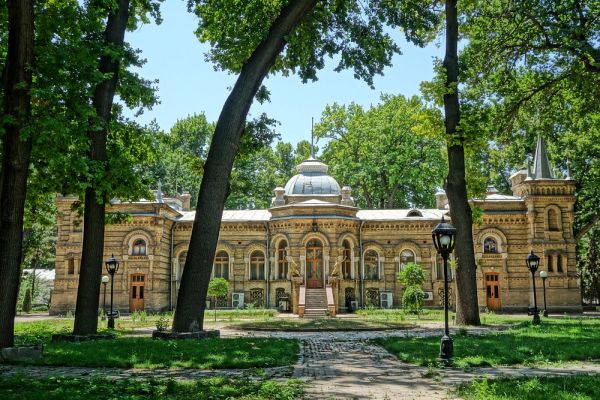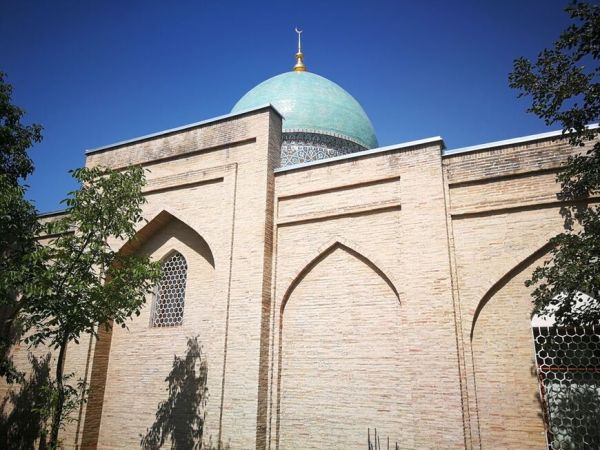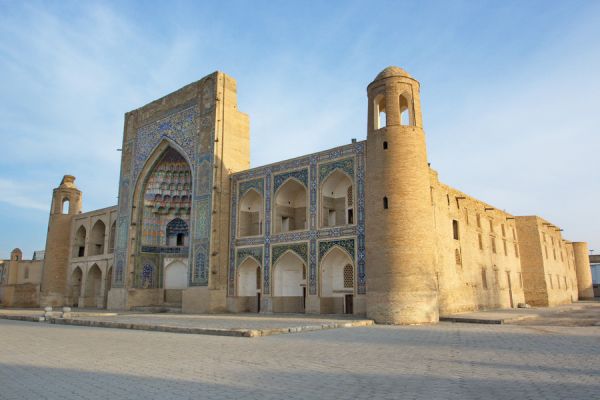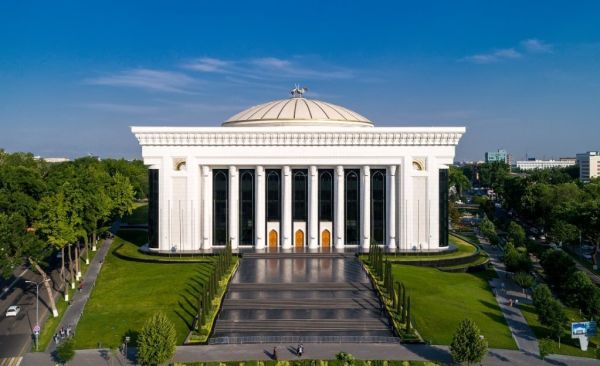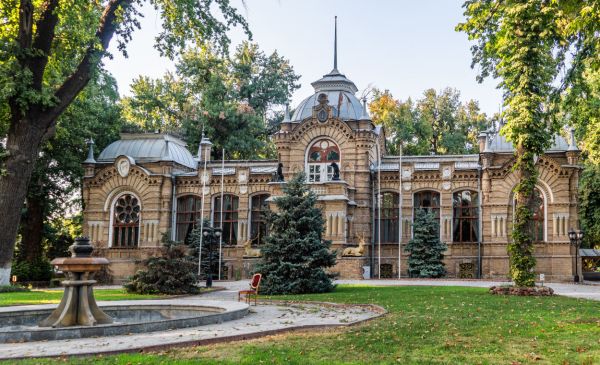Poi-Kalyan Complex
On the territory of the central Registan square stands the magnificent Poi-Kalyan architectural ensemble (in some sources Poi-Kalyan). The name of the complex is translated into Russian as "foot of the great" or "foot of the minaret". Poi-Kalyan dates back to the 12th–13th centuries and is considered the central architectural ensemble of Bukhara.
In the 12th century, Arslan Khan of the Karakhanid dynasty began rebuilding the city and moved the main buildings to a new location. In particular, the cathedral mosque with a minaret was rebuilt on another street. However, due to mistakes or shortcomings in the construction, immediately after the completion of the work, the minaret fell and destroyed most of the new mosque. By 1121, a second mosque was built, and 6 years later, the construction of the minaret, which can be seen today, was completed. The mosque was later rebuilt again in the 15th century, and it is today preserved in the Poi-Kalyan complex. Already in the 16th century, a madrasa was built facing the mosque.
Despite the fact that the buildings of the architectural ensemble were built in different periods, under rulers from different dynasties, the overall appearance of the complex is quite harmonious and integral. In the evenings, the facilities are illuminated.
Architecture and history of the complex
The Poi-Kalyan ensemble includes three ancient structures:
The Kalyan Minaret is an unusual building in appearance and is called the symbol of the city. It is the tallest building in Bukhara. "Kalyan" means "Great", and the entire complex is named for its location near the minaret. Only its dome has not been preserved from the initial design of the minaret, the rest has survived to this day in good condition. The minaret is made of burnt brick, at the top it is crowned by a lantern decorated with 16 through arched openings. Above the lantern is a stalactite cornice with an inscription containing information about the origin of the minaret in 1127. A bridge has been built from the minaret leading to the roof of the neighboring Kalyan Mosque. So, from the mosque, you can climb 105 steps up a narrow spiral staircase made of brick to the upper part of the minaret, the rotunda, from where you can enjoy a beautiful panoramic view of the city. The high height of the minaret symbolizes the patronage of Islam over the inhabitants of the city.
There is an interesting legend about why the Kalyan minaret was one of the few structures that remained intact during the capture of the city by Genghis Khan. It is said that at the moment when Genghis Khan tilted his head back to see the top of the minaret, his hat fell off. The great conqueror bent down to pick it up. Then he decided that he would not destroy the building, in front of which he bared his head and bowed.
The Kalyan Mosque is one of the central religious attractions of the city, the mosque building is very spacious and can accommodate 12,000 people at a time. The name can be translated as "Grand Mosque". The building was built during the reign of Ubaidullah Khan in a traditional rectangular plan with decoration in the form of irrigation mosaics. The main entrance to the east is located on a small hill, flanked by blue domes. There are covered galleries with 288 domes in the courtyard. A small octagonal structure at the inner portal is a pulpit.
The Miri Arab Madrasah is still used for its intended purpose today. The name literally translates into Russian as "Arab Emir". It was built by Ubaidullah Khan for the sheikh, the spiritual mentor of the Sheibanid dynasty, the leader of the Muslims of Bukhara, the Miri Arab of Yemen (Abdullah Yamani). Here, in the second hall, the tombs of the khan, the sheikh himself, as well as other notable persons have been preserved. The first hall was used for lectures and as a mosque. The two—storey building has 114 cells for students. The decor uses carved chestnut mosaics, floral ornaments and intricate knitting. According to a popular version, in order to raise funds for the construction of a madrasa, the khan sold three thousand Persians captured during the war. For a long time, the educational institution was considered one of the best in Central Asia, and many prominent scientists and thinkers taught here. Interestingly, even in the Soviet Union, the madrasah continued to function as a theological school. In the 20th century, restoration work was carried out on the madrasah, after which education resumed within its walls.

